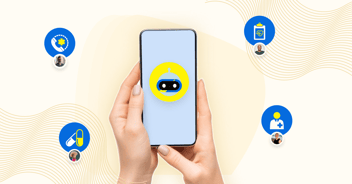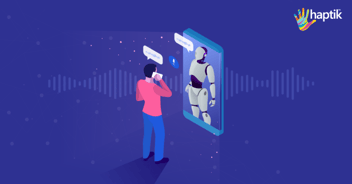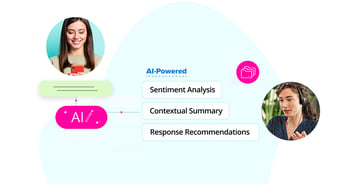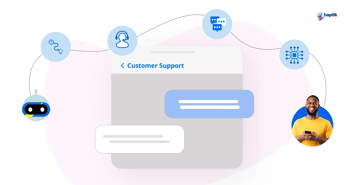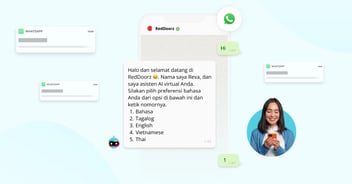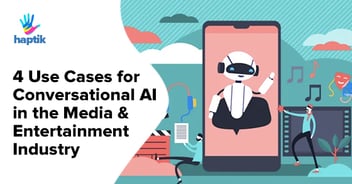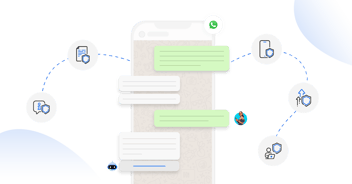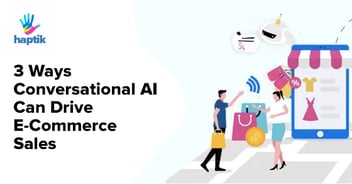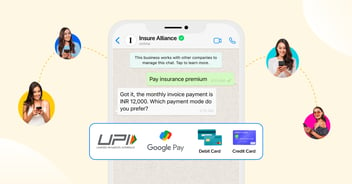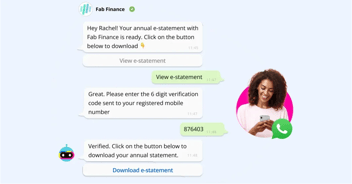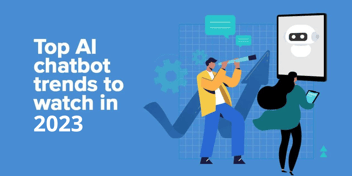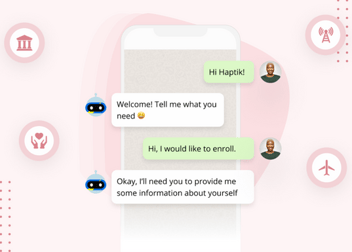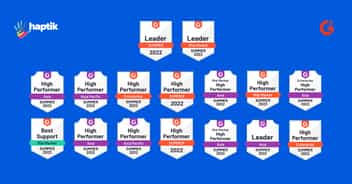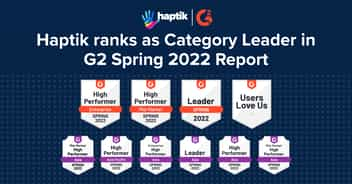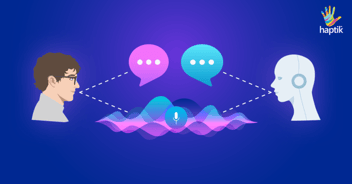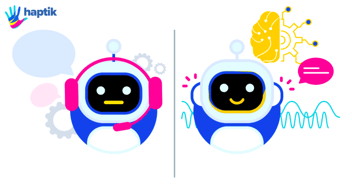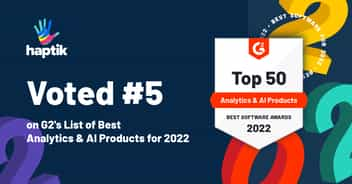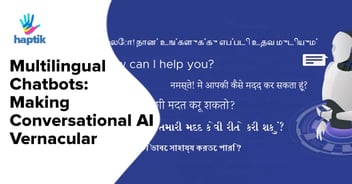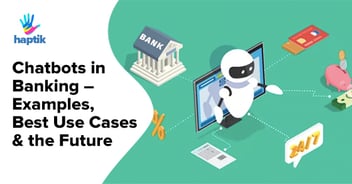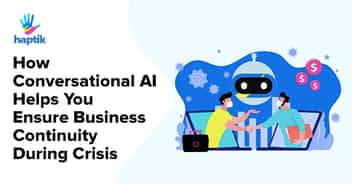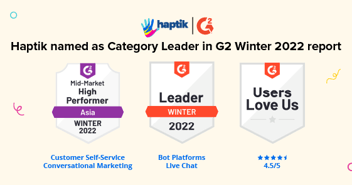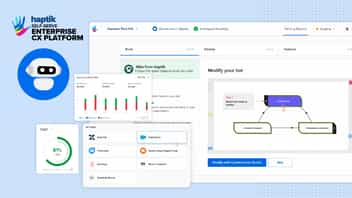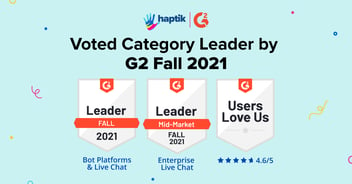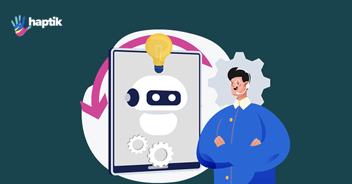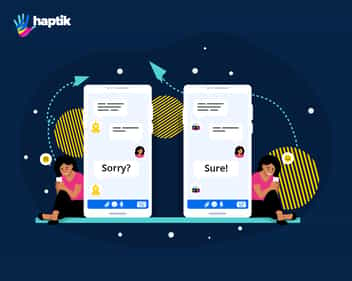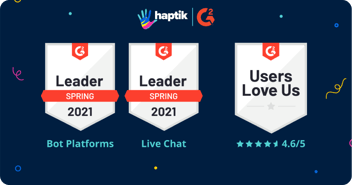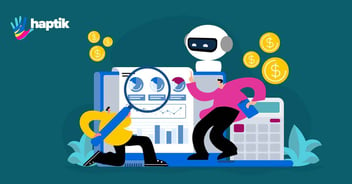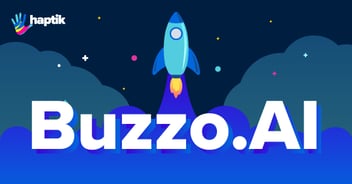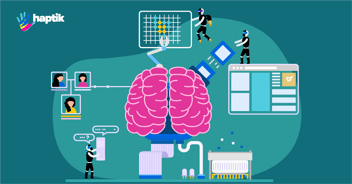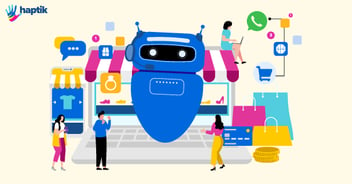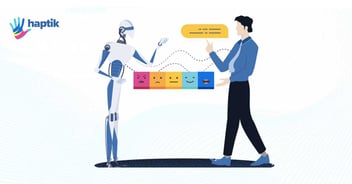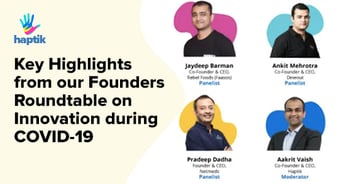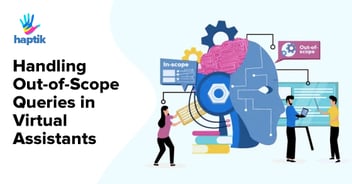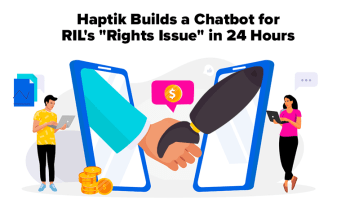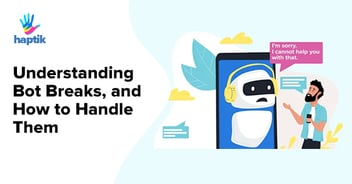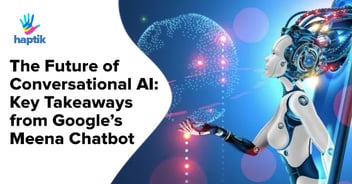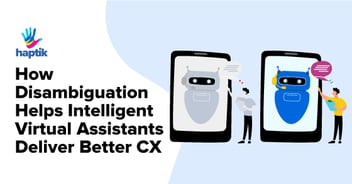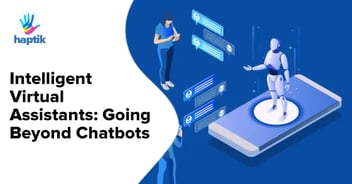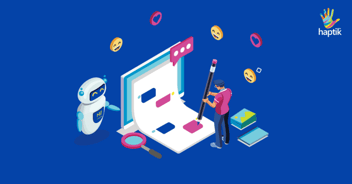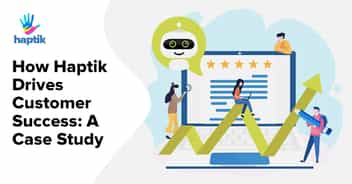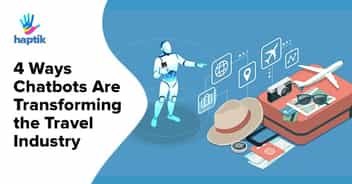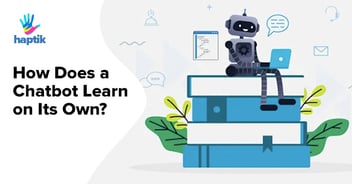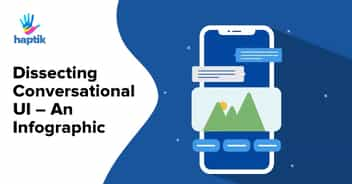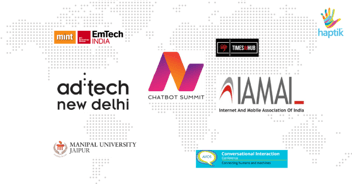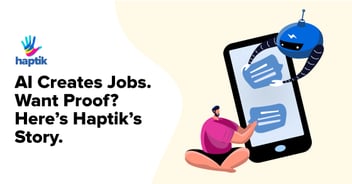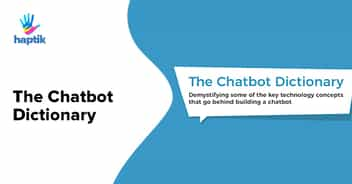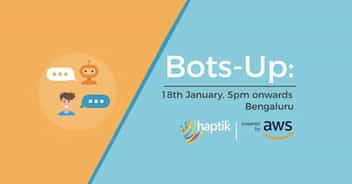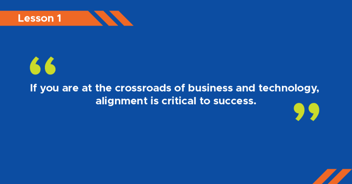Chatbots in Marketing: A Playbook for Conversational Advertising
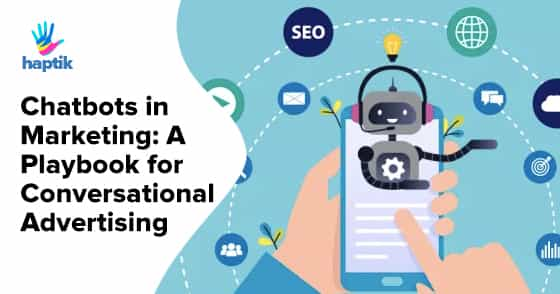
It would scarcely be an exaggeration to say that chatbots are the ‘in thing’ right now, across sectors. Conversational AI has been on the rise for years now, with no less than the likes of Google, Amazon, Facebook, and Jio announcing their intent to dive deeper into this fast-evolving technology.
But, as with any new technology being adopted by enterprises, there is a million-dollar question to be addressed – How do you monetize chatbots?
At Haptik, we’ve found that the first step towards the successful monetization of Conversational AI is to, quite simply, build great bots! Our platform has to date processed over 2 billion interactions – a testament to the appeal of our bots among end-users. This has enabled us to bring on board partners from a wide range of sectors, who use our Conversational AI solutions to fulfill a number of key functions – one of those functions being marketing.
The appeal of conversational advertising
The use of chatbots for marketing is increasingly becoming common. Brands find chatbots to be particularly effective as an advertising tool. One of the major issues with conventional advertising techniques is that they tend to be inherently intrusive and ‘in your face’. While they might succeed in grabbing a consumer’s attention, they fail to truly engage them.
But while it’s easy to assume that people just dislike all advertising, that isn’t true, strictly speaking. On the contrary, people appreciate surprising, innovative and well-timed ads. The phenomenon of ads going viral, and high watch times for successful YouTube ads, prove that.
The use of chatbots allows for a conversational advertising approach that can prove highly engaging to potential customers. An AI-powered bot can interact with users and showcase products/services that might be of interest to them, ultimately guiding them towards a purchase.
Haptik has, over the years, partnered with a number of brands who have leveraged our Conversational AI to effectively engage with users and market their products/services. Drawing upon that experience, I will be examining a number of innovative approaches to using chatbots in marketing.
Broadly speaking, there are two ways one can use chatbots for marketing – Branded content bundled natively as bots and Advertising via programmatic channels. We will delve deeper into each of these in turn:
Branded content bundled natively as bots
One of the limitations of traditional branded content is that there is no way to effectively calculate the ROI on spends. This makes brands hesitant to make the investments necessary to leverage branded content in a big way.
The metrics that are usually available when it comes to measuring the performance of branded content include reach, unique page views, or readers – none of which can be translated into tangible returns on ad spends.
If a bot can be natively bundled with content, metrics such as unique engagements and unique conversations can be tracked by brands – giving them a much better idea of ROI.
Here are a few examples of Branded content being distributed through chatbots, across sectors and formats:
Hospitality
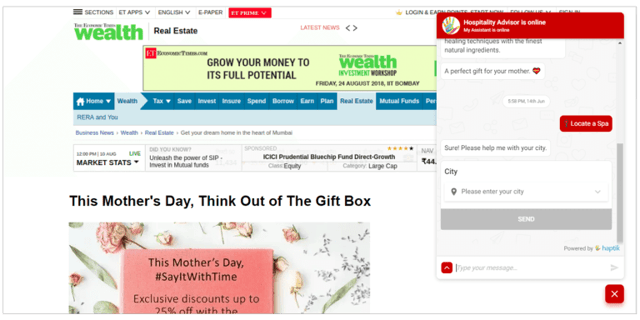
Hospitality Advisor chatbot, by Haptik
The Hospitality Advisor chatbot, pictured above, was bundled natively with an article on the Economic Times website about the Taj offering a 15% discount on a range of experiences, in celebration of Mother’s Day. Complementing the branded content, the chatbot allowed users who interacted with it to learn about the discounted services being offered and even let them easily make bookings!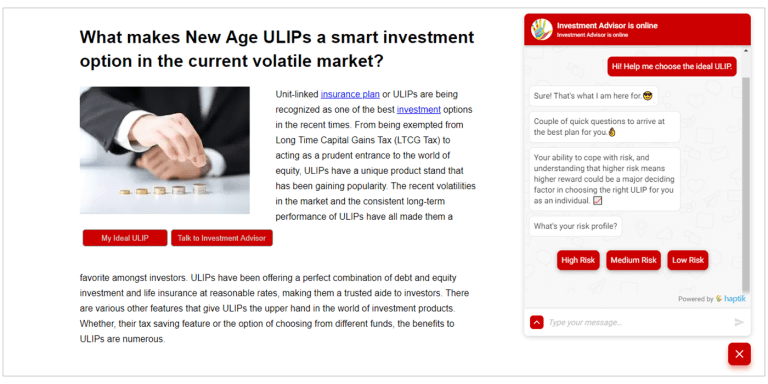
Investment Advisor chatbot, by Haptik
The Investment Advisor chatbot, pictured above, was bundled natively with an article on the Economic Times website about unit-linked insurance plans (ULIP). The bot asked users questions to assess their risk profile and their requirements, recommended the most suitable plan based on their responses, and offered a Call-to-Action for those users who were interested in opting for a ULIP.
Content Microsites on Publishers
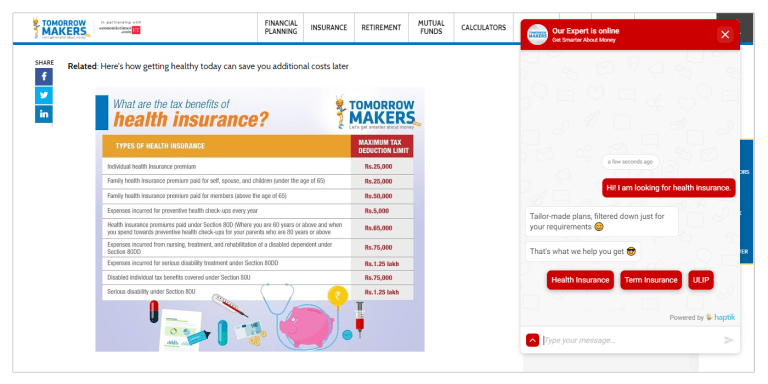
Chatbot deployed on a brand’s content microsite.
An advertising chatbot can be deployed on a brand’s content microsite on a publisher’s website to engage users and offer them information about product and service offerings. For instance, in the example pictured above, a chatbot was deployed on the content microsite of one of our enterprise partners, an insurance services provider. The bot would engage users reading insurance-related content on the microsite, and explain to them the various forms of health insurance being offered by the brand.
Bot-Based Branded Engagement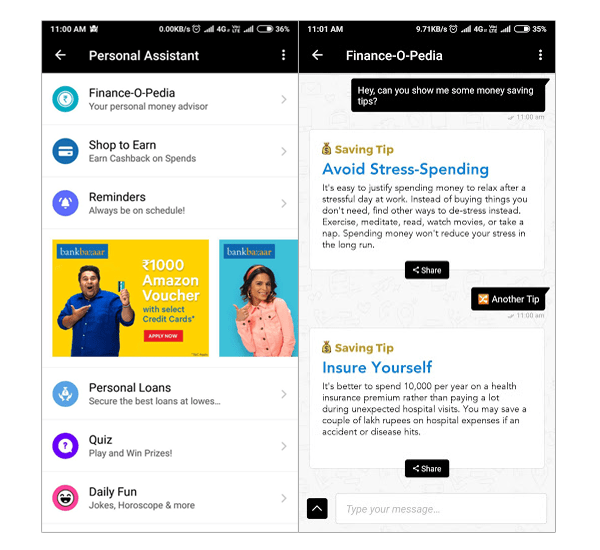 The Finance Shop chatbot, by Haptik
The Finance Shop chatbot, by Haptik
Another interesting application of chatbots in marketing is bot-based engagement campaigns for brands. Haptik’s launched one such campaign for BankBazaar in early 2019. “The Finance Shop” chatbot SDK was integrated with the Times of India and Economic Times mobile apps, with native experiences intact. It targeted the financially-savvy premium customers on these apps, educating them about financial planning, and the range of financial products and services offered by the brand. The bot allowed users to set custom financial goals, learn money-saving tips, set payment reminders etc. – ultimately redirecting interested users to the BankBazaar website to make a purchase.
You can learn more about Haptik’s advertising chatbot for BankBazaar in this case study.
In addition to the aforementioned examples, there are a number of other possible applications for chatbots in marketing. For instance, bots could be deployed on recruitment websites, on the showcase sections of employers, to answer queries of potential candidates and promote specific open positions. Bots could also be deployed on content aggregator websites, as another tool for content distribution, or for engaging readers
Let us now take a look at the pros and cons of distributing branded content through chatbots, as well as what the revenue model for this method typically looks like:
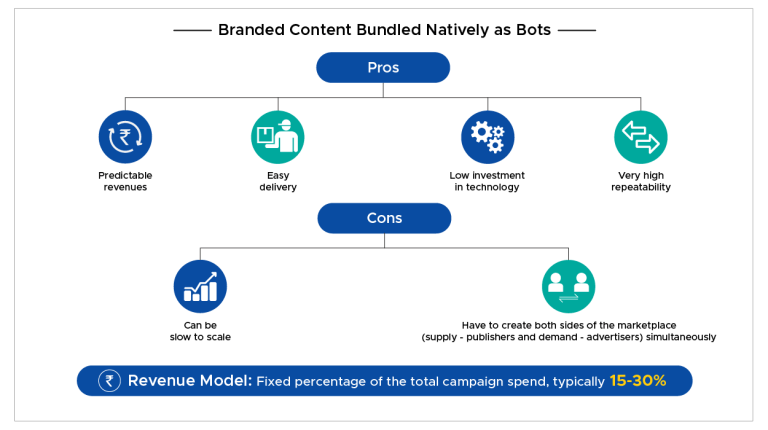 When it comes to distributing branded content through chatbots, the possibilities are endless, and limited only by the innovativeness and creativity of marketers, and the Conversational AI solutions providers they partner with!
When it comes to distributing branded content through chatbots, the possibilities are endless, and limited only by the innovativeness and creativity of marketers, and the Conversational AI solutions providers they partner with!
Let us now turn our attention to the other major method of using chatbots in marketing…
Advertising via programmatic channels
There are primarily two ways to scale up advertising through programmatic channels. They are:
Building partnerships on the supply side
Step 1: Get access to an affiliate network which has targeting capabilities. For e.g. Haptik recently partnered with global affiliate network V-Commission, to implement Conversational AI solutions in performance marketing. You can read more about this alliance.
Step 2: Partner with brands and agencies to create campaign-based marketing chatbots for them.
Let us now take a look at the pros and cons of building partnerships on the supply side, as well as what the revenue model for this method typically looks like: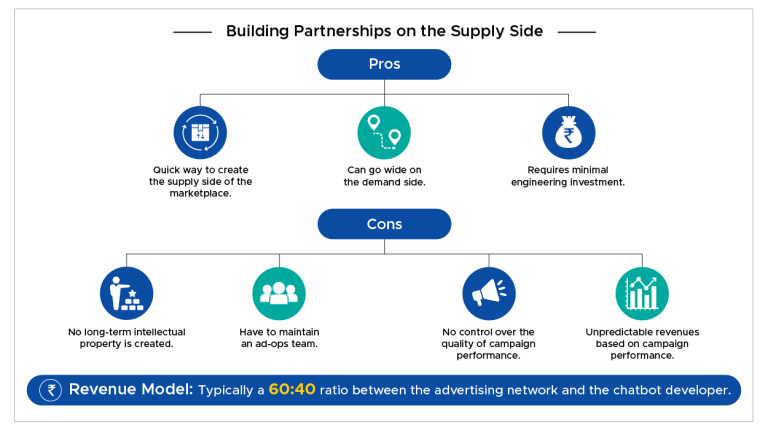
Building the ad-serving engine in-house
Step 1: Build an SDK for serving ads, targeting and tracking capabilities.
Step 2: Drive adoption of the SDK with publishers.
Step 3: Open up the SDK to advertisers.
Step 4: Get more publishers and advertisers on board.
Let us now take a look at the pros and cons of building the ad-serving engine in-house: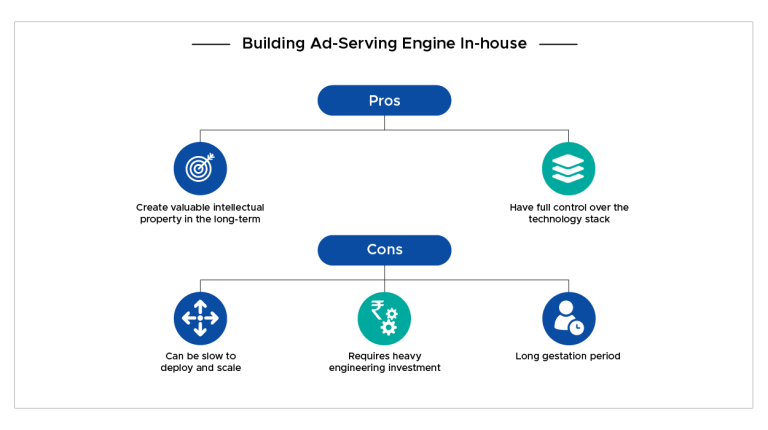
So, what’s next?
That’s the question that makes us jump out of bed, come to work every day, and push the envelope a little further. We at Haptik are adding even more chapters to the playbook for conversational advertising, as we delve into new territory – the use of voice bots in marketing. Haptik recently developed a voice bot for Sensodyne, available on Google Assistant, that discusses oral health issues with users and also allows them to order a free sample of Sensodyne! You can read more about it.
Voice is the exciting new frontier in conversational advertising that we are excited to conquer! Expect more developments on this front, from Haptik, and from the industry in general.
The growing adoption of multilingual bots should also give marketers reasons to cheer, as it will help them better engage first-time Internet users in India in vernacular languages.
To sum up…
As we discussed right at the start, audiences love innovative, engaging, and well-timed marketing campaigns. Conversational AI is a great way to deliver unique and engaging advertising experiences to customers in a two-way, interactive format that not only builds brand awareness, but also serves as a means of lead generation.
Moreover, from a chatbot developers perspective, using chatbots for marketing is a great way to monetize Conversational AI.
We’ve barely scratched the surface of the true potential of chatbots in marketing and advertising! The years to come will certainly prove to be interesting in this regard…
This article has been penned by Pratyush Kukreja, Head – Enterprise Sales & Marketing at Haptik



